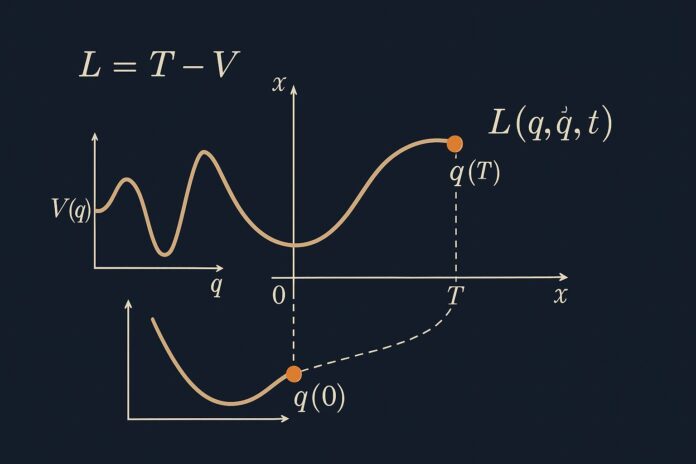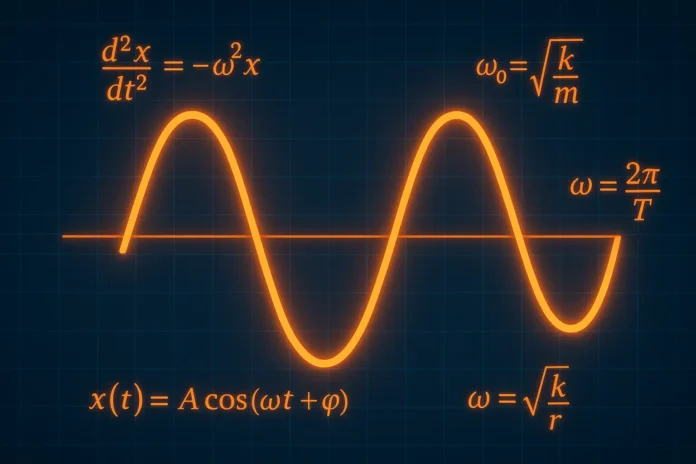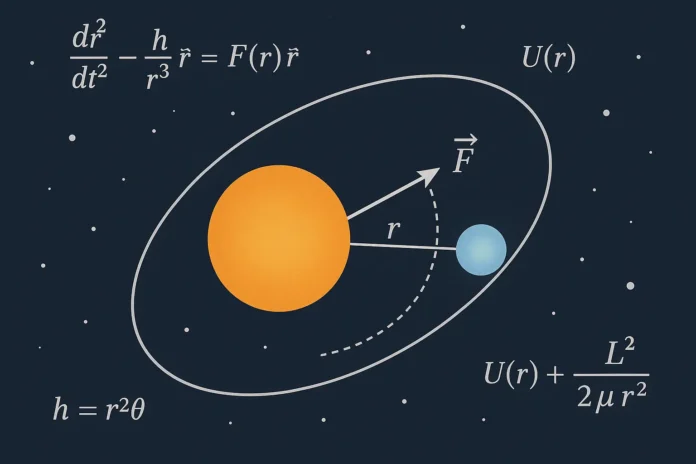Table of Contents
- Introduction
- Why Go Beyond Newton?
- Generalized Coordinates
- Principle of Least Action
- The Lagrangian Function
- Euler-Lagrange Equation
- Simple Example: Free Particle
- Simple Harmonic Oscillator in Lagrangian Formalism
- Atwood Machine via Lagrangian
- Constraints and Degrees of Freedom
- Advantages of the Lagrangian Approach
- Connection to Quantum Mechanics
- Conclusion
1. Introduction
Lagrangian mechanics is an elegant and powerful reformulation of classical mechanics. Instead of focusing directly on forces (as Newtonian mechanics does), it builds from energy principles to describe the motion of systems. At its core is the idea that systems evolve in a way that minimizes (or extremizes) a quantity called action.
While Newton’s approach is intuitive and practical for many problems, the Lagrangian formulation excels in systems with constraints, symmetry, and complex interactions — making it invaluable for theoretical physics and quantum mechanics.
2. Why Go Beyond Newton?
Newton’s laws work well for many problems — pushing blocks, falling objects, or planetary motion. But when dealing with:
- Multiple degrees of freedom
- Non-Cartesian coordinates
- Complicated constraints
- Systems with symmetries (e.g., rotational)
Newton’s method becomes cumbersome. Lagrangian mechanics handles such cases more naturally by focusing on scalar quantities (energy) and minimizing action rather than computing forces directly.
3. Generalized Coordinates
In Lagrangian mechanics, we use generalized coordinates:
- Denoted by \( q_1, q_2, …, q_n \)
- Can be angles, distances, or any parameters describing the configuration of the system
- Useful in non-Cartesian systems like pendulums, rotating bodies, or spherical systems
Instead of dealing with vectors \( \vec{F} \), we describe the configuration of a system in terms of coordinates and velocities \( \dot{q}_i \).
4. Principle of Least Action
The foundation of Lagrangian mechanics is the Principle of Least Action.
It states:
A physical system evolves between two configurations such that the action integral is minimized (or extremized).
The action is defined as:
\[
S = \int_{t_1}^{t_2} L(q_i, \dot{q}_i, t) \, dt
\]
Where:
- \( L \) is the Lagrangian of the system
- \( q_i \) and \( \dot{q}_i \) are generalized coordinates and their velocities
This principle is powerful because it leads to equations of motion without invoking force vectors directly.
5. The Lagrangian Function
The Lagrangian is a function defined as:
\[
L = T – U
\]
Where:
- \( T \): kinetic energy
- \( U \): potential energy
It captures the dynamics of the system through energy differences, rather than forces.
Think of the Lagrangian as a measure of how much “freedom” the system has to move, given its energy configuration.
6. Euler-Lagrange Equation
The condition for minimizing the action leads to the Euler-Lagrange equations:
\[
\frac{d}{dt} \left( \frac{\partial L}{\partial \dot{q}_i} \right) – \frac{\partial L}{\partial q_i} = 0
\]
This is the core equation of motion in Lagrangian mechanics. It replaces \( F = ma \) with a more general and coordinate-independent formulation.
You derive one Euler-Lagrange equation for each generalized coordinate \( q_i \).
7. Simple Example: Free Particle
Let’s apply the Euler-Lagrange equation to a free particle (no potential energy):
- Kinetic energy: \( T = \frac{1}{2}m\dot{x}^2 \)
- Potential energy: \( U = 0 \)
So, the Lagrangian is:
\[
L = \frac{1}{2}m\dot{x}^2
\]
Using Euler-Lagrange:
\[
\frac{d}{dt} \left( m\dot{x} \right) = 0 \quad \Rightarrow \quad m\ddot{x} = 0
\]
This confirms Newton’s first law: a free particle moves at constant velocity.
8. SHO in Lagrangian Formalism
Let’s re-derive the simple harmonic oscillator (spring system) using Lagrangian mechanics.
- \( T = \frac{1}{2}m\dot{x}^2 \)
- \( U = \frac{1}{2}kx^2 \)
\[
L = \frac{1}{2}m\dot{x}^2 – \frac{1}{2}kx^2
\]
Now apply the Euler-Lagrange equation:
\[
\frac{d}{dt}(m\dot{x}) + kx = 0 \Rightarrow m\ddot{x} + kx = 0
\]
This reproduces the SHO differential equation — but without invoking any forces explicitly.
9. Atwood Machine via Lagrangian
Consider an Atwood machine: two masses \( m_1 \) and \( m_2 \) connected by a string over a pulley.
Let \( x \) be the displacement of \( m_1 \) downward (so \( m_2 \) moves up by the same amount).
- \( T = \frac{1}{2}m_1 \dot{x}^2 + \frac{1}{2}m_2 \dot{x}^2 = \frac{1}{2}(m_1 + m_2)\dot{x}^2 \)
- \( U = -m_1gx + m_2g x = (m_2 – m_1)gx \)
Lagrangian:
\[
L = \frac{1}{2}(m_1 + m_2)\dot{x}^2 – (m_2 – m_1)gx
\]
Apply Euler-Lagrange:
\[
(m_1 + m_2)\ddot{x} = (m_2 – m_1)g
\]
Which matches the standard result obtained via Newton’s laws — but more elegantly.
10. Constraints and Degrees of Freedom
A major strength of the Lagrangian approach is its treatment of constraints.
- Constraints restrict motion (e.g., a pendulum is constrained to swing along an arc).
- Rather than using forces of constraint (like tension), Lagrangian mechanics handles them by reducing the number of coordinates.
The number of degrees of freedom equals the number of independent generalized coordinates after accounting for constraints.
11. Advantages of the Lagrangian Approach
- Coordinate-independence: Works in polar, spherical, or any coordinates.
- Scales well: Easily applies to multi-body systems.
- Energy-based: Uses scalar quantities (simpler math).
- Elegant with symmetries: Symmetries lead to conservation laws (via Noether’s theorem).
- Foundation for quantum mechanics and field theory.
12. Connection to Quantum Mechanics
Lagrangian mechanics leads directly into quantum physics via Feynman’s path integral formulation, where the probability of a particle’s path is weighted by:
\[
e^{iS/\hbar}
\]
The action \( S \) is the same as in classical mechanics:
\[
S = \int L \, dt
\]
In this view, all paths are possible, but the classical path is the one where the action is extremized — precisely the Principle of Least Action.
13. Conclusion
Lagrangian mechanics reimagines motion as an optimization problem, replacing Newton’s vector-based force laws with elegant energy principles. It’s especially powerful in dealing with complex systems, constraints, and arbitrary coordinates — and provides the conceptual bridge from classical physics to quantum mechanics.
For learners, mastering this framework not only simplifies many physical problems but also prepares the ground for understanding advanced physics — from quantum field theory to general relativity.






